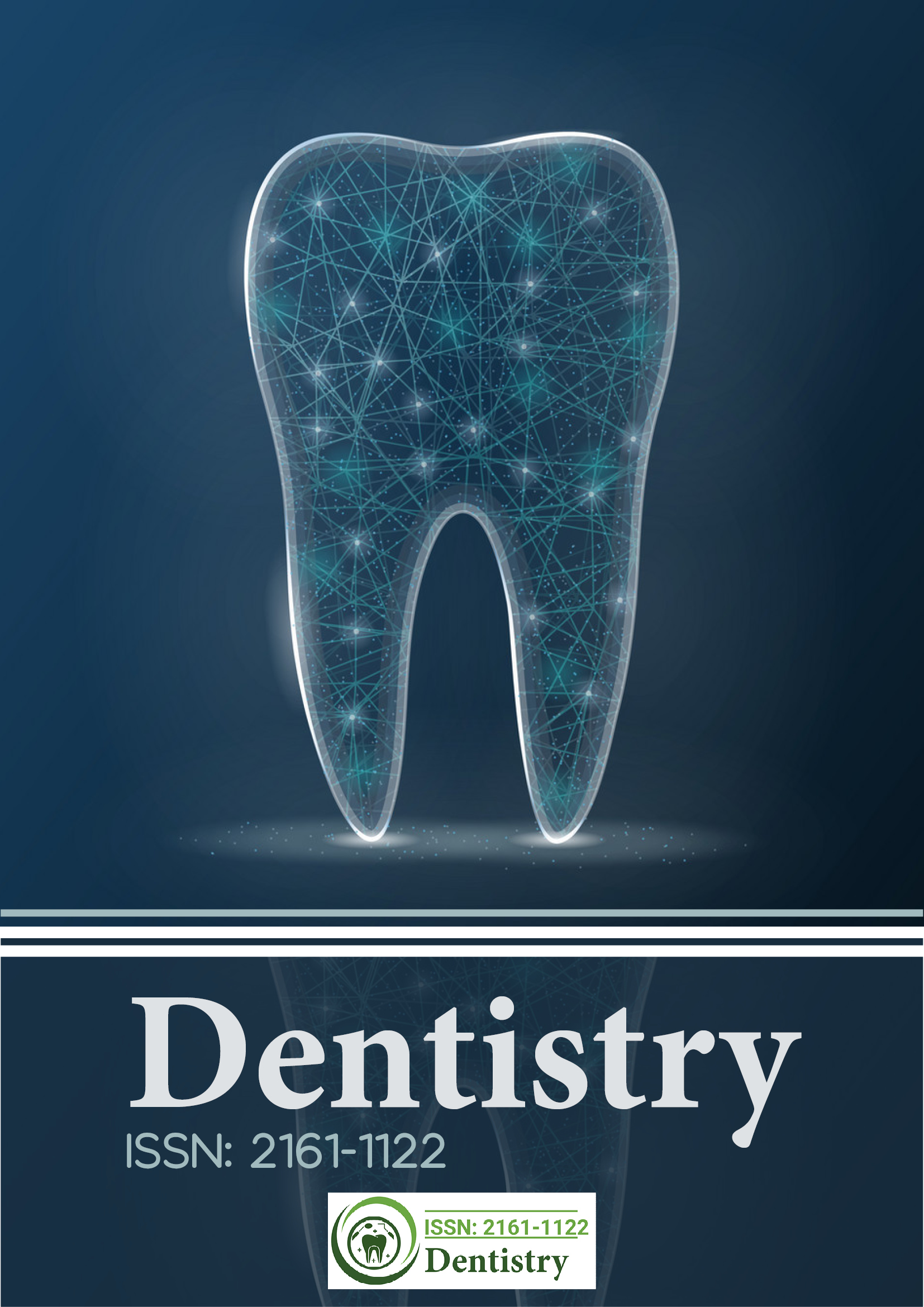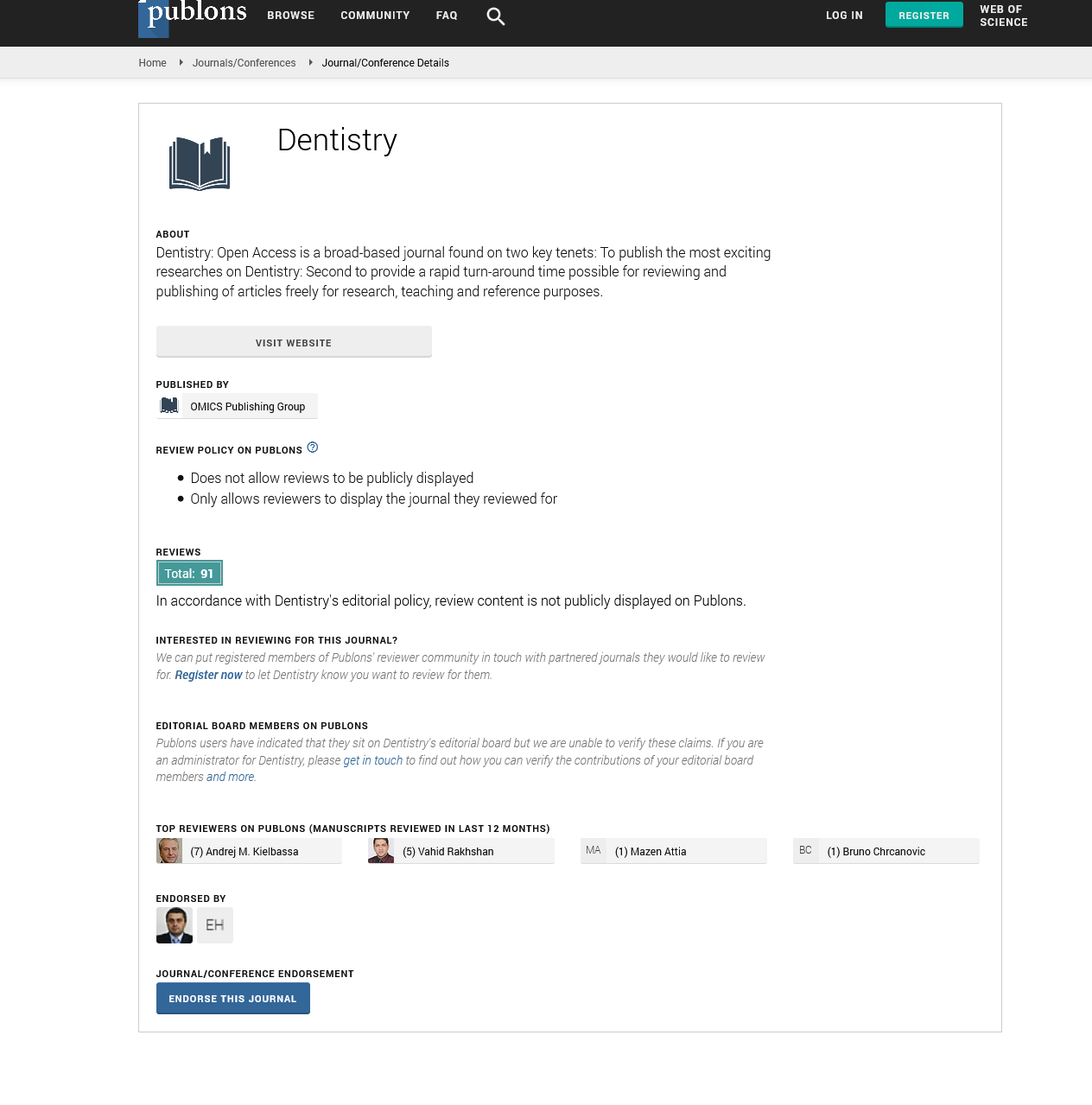Citations : 2345
Dentistry received 2345 citations as per Google Scholar report
Indexed In
- Genamics JournalSeek
- JournalTOCs
- CiteFactor
- Ulrich's Periodicals Directory
- RefSeek
- Hamdard University
- EBSCO A-Z
- Directory of Abstract Indexing for Journals
- OCLC- WorldCat
- Publons
- Geneva Foundation for Medical Education and Research
- Euro Pub
- Google Scholar
Useful Links
Share This Page
Journal Flyer

Open Access Journals
- Agri and Aquaculture
- Biochemistry
- Bioinformatics & Systems Biology
- Business & Management
- Chemistry
- Clinical Sciences
- Engineering
- Food & Nutrition
- General Science
- Genetics & Molecular Biology
- Immunology & Microbiology
- Medical Sciences
- Neuroscience & Psychology
- Nursing & Health Care
- Pharmaceutical Sciences
Abstract
The Main Risk Factors for Implant Failure in Elderly Patients: A Clinical Trial Study
Rackel Goncalves*, Valquiria Quinelato, Marina Prado Fernandes Pinheiro, Juliana Prazeres Castro, Patricia Arriaga, Esio de Oliveira Vieira, Aldir Nascimento Machado, Telma Aguiar, Alexandre Campos Montenegro and Priscila Ladeira Casado
Background: Peri-implant disease is a multifactorial disease, with increasing prevalence in the population rehabilitated with endosseous implants and associated with numerous extrinsic and intrinsic risk factors such as systemic disease, smoking, genetic disorders, and previous periodontitis.
Objective: To identify risk factors associated with the presence of peri-implant disease and to analyze whether the biofilm of the prosthesis directly influences the development of peri-implantitis.
Methods: Fifty-one subjects rehabilitated with endosseous implants were included in this study. Risk factors were assessed through careful history (habit, systemic diseases, history of periodontitis). The clinical parameters evaluated were: clinical probing depth; presence of mobility; peri-implant bleeding; implant function time; presence of biofilm on the prosthesis and/or on the implant. Participants were divided into two groups: Health Group (HG) and Peri-Implant Disease (PID) group: Subdivided into mucositis and peri-implantitis.
Results: The average age was 65 ± 12, being 39 (76.4%) women and 12 (23.6%) men. The PID group showed a high incidence of smokers (p=0.02). Subjects with biofilm accumulation over the implant supportive prostheses showed 9 times more chance of developing mucositis (p=0.02) and while smokers had 3.5 times more chance of developing peri-implantitis (p=0.01) and dental implant loss (p=0.001).
Conclusion: The main risk factors associated with implant failure in elderly patients were: Smoking habit and biofilm accumulation in the prosthesis. Smoking is highly associated with implant loss.
Published Date: 2025-01-16; Received Date: 2023-08-26

